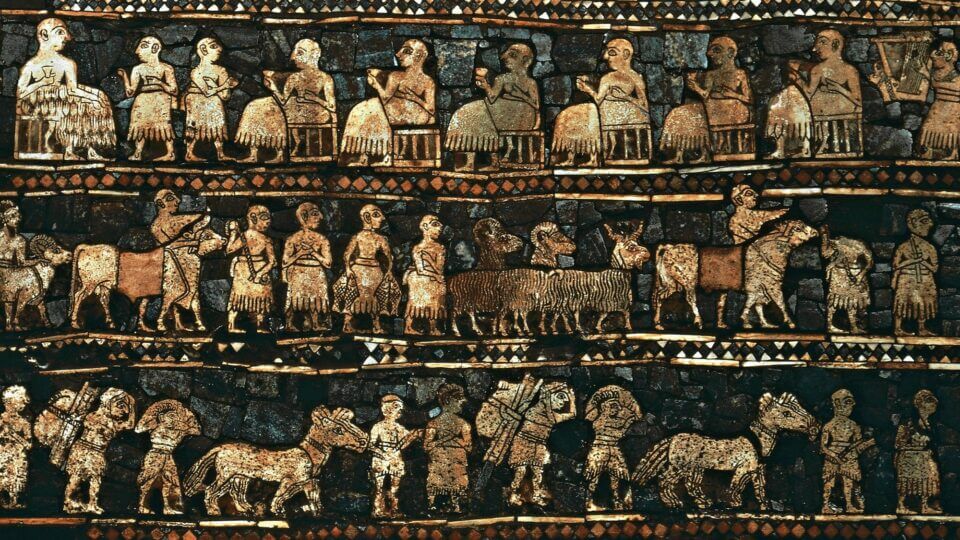
“Implicit in this choice was the belief that tolerance of all values was more important than inculcating any particular set of values and, thus, that tolerance was the most important aim of society.”
Abstract
A commitment to tolerating different values and engaging in a competition of ideas is fundamental to Western democracy. However, when societies lose their common sense of norms and values, people struggle to connect and find a sense of meaning. By exploring the costs of dogmatically pursuing “tolerance,” we can come to a more nuanced view that avoids the pitfalls of both relativism and dogma.
In the late 1960s, American schools turned away from teaching traditional virtues and instead embraced values clarification, a distinctly amoral and individual approach to exploring values. Rather than promoting specific beliefs like “cheating is wrong,” values clarification sought to help students discover their own values. Students were led through a series of questions that were supposed to help them determine what they “prize” or “cherish” and then to integrate these values into their behavior.
This approach claimed to be a value-neutral method for unlocking students’ beliefs. Teachers were instructed to keep their opinions to themselves and were even given a handbook that told them which questions they should ask along with how they should respond to typical student answers. But the choice to pursue values clarification rather than to promote specific virtues (as most civilizations have done throughout history) communicated clear value judgments that were transmitted from and into mainstream culture. Implicit in this choice was the belief that tolerance of all values was more important than inculcating any particular set of values and, thus, that tolerance was the most important aim of society. This was reinforced through other expectations, like asking students not to ask “why” questions about their classmates’ choices. Students began to internalize a sense that one should never judge; after all, who were they to claim anything was better or worse?
The symptoms of this worldview are evident throughout modern culture and religion. In 2005, sociologists Christian Smith and Melinda Lundquist Denton surveyed teenagers across America about their religious beliefs and found that while a majority claimed to be Christian, their actual beliefs indicated a new predominant faith, which the researchers called Moralistic Therapeutic Deism. The defining characteristic of this religion was that it was almost entirely nonjudgmental, even about whether people should pursue religion or not. Most teenagers claimed to believe in a god who wanted them to be nice but did not require much else. God was just there to step in when they needed help and to take them to heaven when they died. As Smith and Denton write in their book Soul Searching, “For most teens, nobody has to do anything in life, including anything to do with religion. ‘Whatever’ is just fine, if that’s what a person wants.”
But, to universal approval, my most talented student started things off by declaring that all values are subjective and cannot be shown to be better or worse.
A recent discussion with my Teen Leadership students showed just how pervasive these attitudes are. Inspired by the classic book Zen and the Art of Motorcycle Maintenance, I posed the question: “How do you know something is better or worse?” I expected a lively inquiry ranging from music and food tastes, to sports, leadership, and practical ethics. But, to universal approval, my most talented student started things off by declaring that all values are subjective and cannot be shown to be better or worse. Jumping right to the end, aren’t we? I dug deeper, but no one was willing to argue that anything could be objectively bad. Litter. Systematic genocide. Punching helpless infants in the face. No action could be argued against on any grounds other than personal preference. They were so certain of this that they would not even entertain arguments to the contrary.
I was struck by the dissonance between this belief and the opinions many had expressed in previous class discussions. Students seemed to have been trained to claim that complete tolerance was the only legitimate worldview, yet they also appeared to feel indignant about a number of problems that they blamed on other people. It is as if there is a program constantly running in the background of their minds, sabotaging any attempt for deeper introspection. Every time they begin to care that a behavior is destructive, a little voice reminds them to qualify their comments: “But to each their own, I guess.” Even more concerning is that students are inclined to dismiss other people’s value judgments without reflection. They know that their behaviors are as justifiable as anyone else’s. In fact, one of the only things students seem uniformly to accept is that it is wrong to impose moral standards on others.
Values clarification was born out of the counterculture movement of the 1960s. Americans finally began to challenge many racist and misogynist norms, opening the door to a far more open and fair society. However, as Americans confronted traditional intolerances, many disregarded the value of promoting virtue altogether. It became difficult to appeal to a common sense of values without appearing bigoted and judgmental. More tolerance and inclusiveness were always better. Swept up in this fervor, schools moved away from character education and committed to helping students construct their own sense of values, apart from anything society would impose upon them.
As well-intentioned as this was, it made it harder for students to develop any sense of purpose outside of their own self-interest. As the psychologist Jonathan Haidt explains in his 2006 book The Happiness Hypothesis, “… it cut children off from the soil of tradition, history, and religion that nourished older conceptions of virtue….Asking children to grow virtues…looking only within themselves for guidance, is like asking them to invent their own language. Even if they could do it, the resulting isolation would be crippling.”
Even more, by removing the unifying power of common ideals, people from different backgrounds found it more difficult to connect. In the absence of anything larger to rally around, tribalism festered. Haidt distinguishes between two different types of diversity: demographic and moral. Demographic diversity is about including previously excluded groups and treating people equally. This allows for common standards, which help people to overcome superficial differences. We aim to judge each other by the conduct of one’s character. Moral diversity, by contrast, is the removal of any common values and expectations. Its goal is to discredit existing standards so that every lifestyle is deemed equally legitimate. This creates a society without norms—a condition which the founder of sociology, Emile Durkheim, found was correlated with more suicides and worse mental health. By choosing to pursue moral diversity, we reduced the power of values to facilitate connection and compel fulfilling behaviors.
These changes coincided with an expansion of consumer culture, which taught people to define themselves through brand preferences and conspicuous consumption rather than through character and capacity. Pleasures expanded, and the number of reasons not to indulge decreased. Without anything pulling people to become better, more and more individuals oriented their lives around simple self-indulgence.
Still, many would conclude that the social progress we have seen justifies these costs. Without a commitment to tolerance, racist laws might still reign in the South, and gay marriage would still be illegal. It is better to have moral freedom than repression. But freedom of speech allows for the development of values without the abandonment of them.
When we think of societies that emphasize virtue, we often picture restrictive religious cultures with their witch hunts, scarlet letters, and dogmatic moral certitude. Sex is shameful, women are subservient, and homosexuality is a ticket to hell. But these notions of virtue are just as limited as our modern emphasis on care and tolerance.
To the ancient Greeks, being virtuous was not about adhering to some rigid worldview but, rather, striving towards virtues. Morality was not a purity test. It was about developing a broad spectrum of human excellences. The founder of positive psychology, Martin Seligman, teamed up with psychologist Chris Peterson to develop a definitive list of these positive virtues. They scoured moral guides from different societies throughout history and came up with a list of 24 primary character strengths that fall under six categories of virtues. These include:
Wisdom: Curiosity; Love of learning; Judgment; Ingenuity; Emotional Intelligence; Perspective
Courage: Valor; Perseverance; Integrity
Humanity: Kindness; Loving
Justice: Citizenship; Fairness; Leadership
Temperance: Self-control; Prudence; Humility
Transcendence: Appreciation of beauty and excellence; Gratitude; Hope; Spirituality; Forgiveness; Humor; Zest
What stands out most from this list is how limited Western cultures are in their ability to promote any but three of these character strengths: fairness, kindness, and loving. Consequently, our discussion of morality has become increasingly narrow-minded. We cannot speak about the importance of self-control without being accused of shaming. Zest and prudence cannot be invoked to counter runaway safetyism. Even promoting timeliness and learning can now be viewed as cultural colonialism. In the absence of a broader moral vocabulary, diversity, equity, and inclusion have become incontestable ends. Far-left progressives can invoke these benchmarks of tolerance in order to discredit any idea, and, lacking a more diverse set of shared values, freedom is our only rebuttal.
But how would we compare to the ancients in regards to valor, perseverance, citizenship, humility, appreciation of beauty, or gratitude?
It is popular to view modernity as the epitome of human progress. We have created societies dedicated to treating people equally regardless of gender, race, or sexual orientation. But these developments say very little about our character. All people are equal. Great. That is a belief. It may be an essential, society-transforming idea, but it is just another belief that people inherit, like dogmatic tolerance or salvation through faith. From this limited view, a person’s virtue is reserved to whether he believes the correct thing or not. Virtue is divorced from behavior; it is the toleration of all behavior (with the exception of opinions that are deemed intolerant).
We look at ancient cultures with their quaint myths, violence, and rampant injustice and feel an heir of superiority. But how would we compare to the ancients in regards to valor, perseverance, citizenship, humility, appreciation of beauty, or gratitude? Who is more likely to override their own self-interest or commit to the work of becoming something better and more capable? There is nothing inherent in treating people equally that would prohibit a culture from promoting the virtues mentioned above. In fact, creating clear standards would almost certainly increase equality of opportunity and narrow the gap between outcomes.
In their 2014 book The Triple Package, Yale Professors Amy Chua and Jed Rubenfeld identify three distinct traits that are uncommon throughout mainstream culture but which are cultivated in all our most prosperous sub-cultures, from Chinese and Nigerian-Americans to Mormons and Jews. These include:
- A sense of cultural superiority—They believe their background has given them a greater capacity to be successful.
- Insecurity—They feel pressure to meet standards.
- Impulse control—They know they can delay gratification in pursuit of a larger mission.
These triple package traits have been the formula for most successful cultures throughout history, including the United States. But the prevailing youth development paradigm inculcates almost the exact opposite sense in most students today. As Chua and Rubenfeld state, “In the last half of the twentieth century, American culture declared war on both insecurity and impulse control, replacing them with an ever-increasing hunger for self-esteem and immediate gratification.” What is left is a hollow, individualized form of superiority that tells people they are perfect just how they are. This may feel good in the moment, but it inhibits the sort of effort necessary to do the hard things that bring success, meaning, and self-respect.
As the authors note, their analysis is necessarily broad and narrow in scope. They only measure group success by economic and educational markers, without regard for general well-being. Still, it says a lot about our culture that the groups who are most successful are those who reject mainstream norms. Furthermore, even if you disagree with the narrow definitions of success characterized by, say, a stereotypical Chinese Tiger Mom (a term coined by Chua), that just means we favor a broader tapestry of virtues. You value things like humor, zest, and balance. It does not mean that there is anything wrong with the triple package. Triple package traits are the fuel necessary to pull groups towards any worthwhile goal, whether that is better physical health, more thoughtfulness, or a greater capacity to judge what matters.
Teenagers today are faced with more temptation and confusion than any previous generation. Nothing is sacred, nothing is trustworthy, and there are always more tantalizing distractions to pull them away from working to become something more. If students are to be capable of overcoming the apathy and impulsiveness that have defined their generation, we will have to begin defining what we stand for again. A culture can only thrive when it identifies what matters and when it creates clear standards to drive people in that direction. If we want to help people live better lives, we will have to stop telling them that they are perfect just the way they are.
Shane Trotter is a writer and high-school educator in Texas, and his book Setting the Bar: Preparing Our Kids to Thrive in an Era of Distraction, Dependency, and Entitlement will be out in November.










